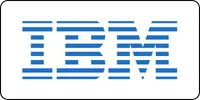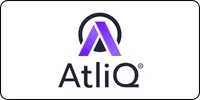Microsoft Power BI Data Analyst Course







Microsoft Power BI Data Analyst Certification course
What will I learn?
- Gain practical experience in analyzing real-world datasets and solving business challenges using Power BI.
- Master data visualization best practices to effectively communicate insights to stakeholders.
- Explore advanced data modeling techniques and DAX (Data Analysis Expressions) functions for enhanced analysis.
- Develop a solid understanding of Microsoft Power BI and its capabilities.
Requirements
- Basic understanding of data analysis concepts and familiarity with Excel.
- No prior experience with Power BI is required.
Microsoft Power BI Data Analyst Course Content
- Introduction to Power BI
- Overview of Power BI: Introduction to the Power BI ecosystem, including Power BI Desktop, Power BI Service, and Power BI Mobile.
- Getting Started with Power BI Desktop: Installation and setup of Power BI Desktop, interface overview, and basic navigation.
- Data Preparation
- Connecting to Data Sources: Connecting to various data sources such as Excel, SQL Server, Azure SQL Database, SharePoint, and web sources.
- Data Transformation: Data shaping, cleaning, and transformation using Power Query Editor.
- Data Modeling: Creating relationships between tables, defining calculated columns and measures, and optimizing data models.
- Data Visualization
- Creating Visualizations: Building charts, graphs, maps, tables, and other visualizations to represent data.
- Formatting Visualizations: Customizing visual appearance, colors, fonts, and styles to enhance readability and aesthetics.
- Interactive Reports and Dashboards: Designing interactive reports and dashboards with slicers, filters, bookmarks, and drill-through functionality.
- Advanced Analytics with Power BI
- Advanced Data Analysis: Implementing advanced analytics techniques such as forecasting, clustering, and regression analysis.
- Integrating Machine Learning Models: Incorporating machine learning models into Power BI reports using Power BI service integration or custom visuals.
- Analyzing Time-Series Data: Analyzing time-series data, implementing date calculations, and creating time-based visualizations.
- Power BI Service and Collaboration
- Publishing Reports to Power BI Service: Publishing reports and dashboards to Power BI Service for sharing and collaboration.
- Sharing and Collaboration: Sharing reports with colleagues and stakeholders, configuring sharing settings, and managing access permissions.
- Power BI Mobile: Accessing and interacting with Power BI reports and dashboards on mobile devices using Power BI Mobile app.
- Governance and Security
- Data Governance: Implementing data governance policies, data lineage, and data security best practices in Power BI.
- Row-Level Security: Implementing row-level security to restrict access to data based on user roles and permissions.
- Data Refresh and Scheduled Refresh: Configuring data refresh schedules to keep reports up to date with the latest data.
- Advanced Power BI Features
- Advanced Visualizations: Exploring advanced visualization techniques such as custom visuals, custom tooltips, and custom themes.
- Power BI Embedded: Embedding Power BI reports and dashboards into custom applications using Power BI Embedded.
- Advanced Data Connectivity: Connecting to and querying data from advanced data sources such as Azure Analysis Services, Azure Data Lake Storage, and BigQuery.
- Power BI Administration and Management
- Power BI Admin Portal: Overview of the Power BI Admin Portal for managing Power BI tenants, workspaces, and settings.
- Usage Metrics and Monitoring: Monitoring usage metrics, performance, and user engagement with Power BI reports and dashboards.
- Power BI Governance Best Practices: Implementing governance best practices for managing Power BI workspaces, datasets, and content.
- Exercise 1: Data Preparation and Modeling
Objective: Prepare data and create a data model for analysis in Power BI.
Data Preparation: - Import sample data from a CSV or Excel file into Power BI Desktop.
- Explore the imported data to identify any issues or inconsistencies.
- Clean and transform the data using Power Query Editor to ensure accuracy and consistency.
Data Modeling: - Create relationships between different tables based on common fields.
- Define calculated columns and measures using DAX (Data Analysis
- Expressions) for analysis.
Optimize the data model for performance by removing unnecessary columns and tables. - Exercise 2: Creating Visualizations
Objective: Create interactive visualizations to analyze and present data insights.
Basic Visualizations: - Create a variety of basic visualizations such as bar charts, line charts, and pie charts to represent different aspects of the data.
- Customize the visualizations by adjusting colors, fonts, and labels.
Advanced Visualizations: - Experiment with advanced visualizations like scatter plots, histograms, and treemaps to explore relationships and distributions in the data.
- Utilize custom visuals from the Power BI marketplace to enhance visualizations.
- Exercise 3: Data Analysis and Insights
Objective: Perform data analysis and derive insights from the visualizations.
Analyzing Trends: - Use time-series visualizations to analyze trends over time.
- Identify seasonal patterns and anomalies in the data.
Comparative Analysis: - Compare performance across different categories using slicers and filters.
- Analyze performance by region, product, or customer segment.
Identifying Patterns: - Use clustering analysis or trend lines to identify patterns and correlations in the data.
- Identify outliers and anomalies that may require further investigation.
- Exercise 4: Dashboard Creation
Objective: Design interactive dashboards to present key metrics and insights.
Dashboard Layout: - Design a layout for the dashboard that highlights key metrics and visualizations.
- Organize visualizations logically to provide a cohesive narrative.
Interactivity: - Add slicers, filters, and drill-down capabilities to enable interactivity.
- Configure cross-filtering and highlighting between different visualizations.
Mobile Layout: - Optimize the dashboard layout for mobile devices to ensure a consistent user experience.
- Exercise 5: Sharing and Collaboration
Objective: Share dashboards with stakeholders and collaborate on insights.
Publishing to Power BI Service: - Publish the dashboard to Power BI Service for sharing and collaboration.
- Configure access permissions to control who can view and edit the dashboard.
Sharing and Collaboration: - Share the dashboard with stakeholders via email or link.
- Collaborate on insights by adding comments and annotations.
Scheduled Refresh: - Configure scheduled refresh to keep the data up-to-date with the latest changes.
Get in touch
400+ Global Employment Partners







































Why Choose Advanced Microsoft Power BI Data Analyst Certification Course from Bright Computer Education?

Designed Curriculum
Our curriculum covers everything from basic to advanced topics. Topics include variables, data types, control structures, functions, OOP, STL, and more.

Hands-on Learning
Dive into practical exercises and coding projects that reinforce learning and help you build real-world applications.

Experienced Instructors
Learn from industry experts with years of experience in C programming and software development.
Flexible Learning
Choose from flexible scheduling options, including self-paced learning or live virtual classes to fit your busy lifestyle.
Career Development
Gain valuable skills sought after by employers in various industries, from software development to embedded systems and beyond.
Interactive Learning
Engage with fellow learners and instructors through live Q&A sessions, discussion forums, and collaborative coding exercises.
Diverse Career Opportunities in Advanced Microsoft Power BI Data Analyst: Exploring Paths in India's Technology Sector
Frequently Asked Questions
Recently View Courses
Course Details Curriculum Placement FAQ’s Designing and implementing Microsoft DevOps Solution certification course The...
Read MoreCourse Details Curriculum Placement FAQ’s Designing Microsoft Azure Infrastructure Solutions certification course The AZ-305T00:...
Read MoreCourse Details Curriculum Placement FAQ’s Microsoft Power BI Data Analyst Certification course Start your...
Read More
